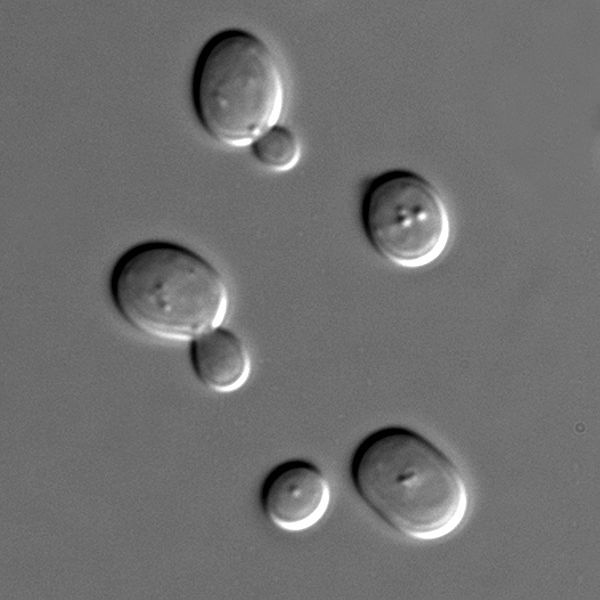-
 Gait
Gait
-
 Sabre tooth tiger
Sabre tooth tiger
-
 Ice growth
Ice growth
-
 Gill rakers
Gill rakers
-
 Proxy
Proxy
-
 Astroparticle
Astroparticle
-
 Kuroshio Current
Kuroshio Current
-
 Work hardening
Work hardening
-
 PC-Card
PC-Card
-
 Oxidase
Oxidase
-
 Heteroatom
Heteroatom
-
 Pigmentation
Pigmentation
-
 Hepcidin
Hepcidin
-
 Transfection
Transfection
-
 Areole
Areole
-
 Rhesus macaque
Rhesus macaque
-
 Gangrene
Gangrene
-
 Orange dwarf
Orange dwarf
-
 Qubit
Qubit
-
 Reticulated fibres
Reticulated fibres
-
 Permafrost
Permafrost
-
 Axial skeleton
Axial skeleton
-
 Triple therapy
Triple therapy
-
 Numéris
Numéris
-
 Electrophile
Electrophile
-
 Saprophage
Saprophage
-
 Kilo base
Kilo base
-
 Declination
Declination
-
 Diflubenzuron
Diflubenzuron
-
 Enterprise
Enterprise
Saccharomyces cerevisiae
Saccharomyces cerevisiae (or brewer's yeast, baker's yeast) is a model organism studied in biology laboratories.
Classification of Saccharomyces cerevisiae
Saccharomyces cerevisiae is a unicellular yeast, a eukaryotic organism belonging to the fungal kingdom and the Saccharomycetes family.
Characteristics of Saccharomyces cerevisiae
Saccharomyces cerevisiae is a round or oval cell, 5 to 10 micrometres in diameter. It has a linear double stranded DNA genome containing 13 million base pairs divided into 16 chromosomes (which have been completely sequenced). It replicates fairly quickly, approximately every two hours at 30°C. It can live in different environments:
- in an aerobic environment in the presence of oxygen where it reproduces rapidly through a respiration process;
- in an aerobic environment where it ferments, i.e.it converts sugar into alcohol. It is a widely used yeast in cooking (to raise dough) and to produce alcohol.
Use of Saccharomyces cerevisiae in the laboratory
Saccharomyces cerevisiae is a model organism in that it is the simplest eukaryotic organism. Researchers can therefore try to understand the processes involved in biological mechanisms before testing in human beings. It has the advantage of reproducing rapidly and can also be transformed in order to express new genes and test substances, etc.
 The yeast Saccharomyces cerevisiae is a model organism used to study eukaryotes overall. © Masur, Wikimedia, public domain
The yeast Saccharomyces cerevisiae is a model organism used to study eukaryotes overall. © Masur, Wikimedia, public domain
Latest
Fill out my online form.



